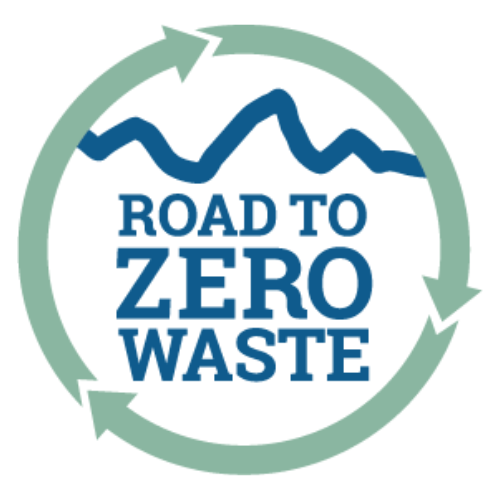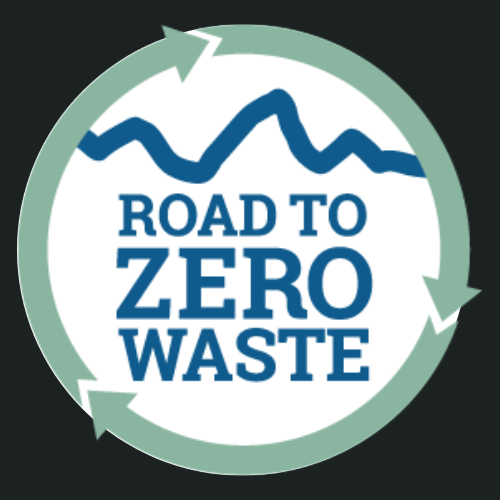
15 Jul Community Challenge: 35% in 35th year

Help Teton County hit 35% waste diversion for 35th anniversary
ISWR urges community to focus on the 3 C’s — cans, cardboard & compost — to meet this milestone goal
Solid Waste and Recycling invites residents, businesses and visitors to help move the needle toward a cleaner, more sustainable future.
“For a few years now, we’ve been hovering around 30% of the valley’s divertables making it out of the trash and into the recycling stream,” said Becky Kiefer, ISWR Superintendent. “By working together and making a few intentional changes, we can reach 35% this year and build momentum for Teton County’s long-term Road to Zero Waste goal of 60%.”
The focus: Cans, Cardboard and Compost
The 3 C’s — cans, cardboard and compost — have been identified as key areas for improvement in a study of Teton County’s refuse. These materials make up a significant portion of what’s still going to the landfill, despite being easy to recycle and despite their value in terms of natural resources and reusability.
- Cans: Aluminum and steel cans are endlessly recyclable and save significant energy and natural resources — but Jackson is only capturing about 16% of aluminum cans and 15% percent of steel/tin food cans. That means the community is sending an estimated 366 tons of aluminum and 90+ tons of steel cans a year to rest forever in the landfill. And it’s not just a matter of wasted resources; it’s a big financial loss, as well. With high values for recycled metals, Teton County residents and visitors are trashing an estimated $500,000 each year in can revenue.
- Corrugated Cardboard: Thanks in large part to local businesses participating in the county’s corrugated cardboard collection program, Teton County recovers nearly 50% of its corrugated boxes. Yet more than 4 million pounds still end up in the trash each year, taking up space and adding weight to trailer loads being driven 100 miles to a regional landfill in Idaho. When recycled, corrugated cardboard can receive up to seven more lifespans as new products.
- Compost: Food scraps remain one of the biggest opportunities — locally and nationwide — to waste less and protect soil and air quality. About 8 million pounds of recoverable food waste is trucked to the landfill each year – that’s 167 tractor-trailer loads a year destined for the landfill. Instead, it could be composted locally and turned back into soil through a Teton County public-private partnership. The county has residential and business food-scrap drop-off programs, as well as a commercial Curb to Compost food waste collection service, which has special discounted rates this year.
MOVING THE NEEDLE: What will it take to reach 35% in the 35th year of recycling?
“It doesn’t take perfection to make a difference,” said Cindy Harger, Teton County waste diversion outreach specialist. “If every individual and business were able to do just a little more, Jackson Hole could keep thousands more pounds of reusable materials out of the landfill this year and move the needle on our community’s Road to Zero Waste JH goals.”
For example, Harger said, if every resident and vacationer in 2025 were to recycle just one additional six-pack of soda or beer and one more soup can, we’d have enough cans to stretch end to end from the Tetons to the shores of the Great Lakes – and we’d be saving money, energy, fuel and emissions, Harger said.
“Cans and corrugated cardboard are valuable materials in the recycling world,” Harger said. “They bring in money, which helps offset the cost of Jackson’s community recycling programs. And more importantly, recycling saves a considerable amount of energy, natural resources, trees and pollution compared to manufacturing them from scratch.”
Beyond a focus on the 3 C’s, even just a small increase in other items that are recyclable in Teton County can also make a major improvement. Examples include:
- Glass bottles and jars — recyclables that are often thrown in the trash but would otherwise be sent to Salt Lake City to be remade into fiberglass insulation.
- Stretchy plastic film — like shopping bags, bubble wrap and garbage bags (Teton County can now take dark stretchy plastics, as well as clear!). These gain a new life as Trex decking.
- Textiles — including reusable clothing, shoes and linens, which can be redistributed through local thrift shops, or when brought to the Recycling Center, provide support for the Big Brothers Big Sisters program via thrift shops in Salt Lake City.
- Dozens of other accepted recyclables, such as scrap metal, paper products, tires, plastic bottles, e-waste, household hazardous waste, foil, yard waste and more.
“Small actions lead to big results,” Kiefer said. “We hope the community will help make 2025 a banner year for recycling, composting and wasting less in Jackson Hole — one can, one box, one apple core at a time.”
Teton County has seven recycling sites at convenient locations throughout the community, as well as at the Recycling Center at Adams Canyon Drive.
For tips, tools and updates, visit www.TetonCountyWY.gov/Recycle and follow RoadToZeroWaste.JH on Facebook and Instagram.
Mark your calendars!
This summer and fall, Teton County Solid Waste and Recycling are hosting to help the community recycle and compost smarter. Mark your calendars for Zero Waste Week, a series of educational and celebratory 35th anniversary events October 12–18, sponsored by the Jackson Hole Travel and Tourism Board and the Community Foundation of Jackson Hole.
###


